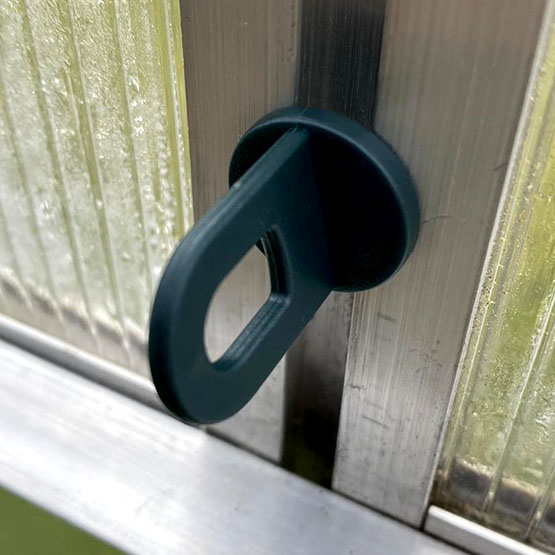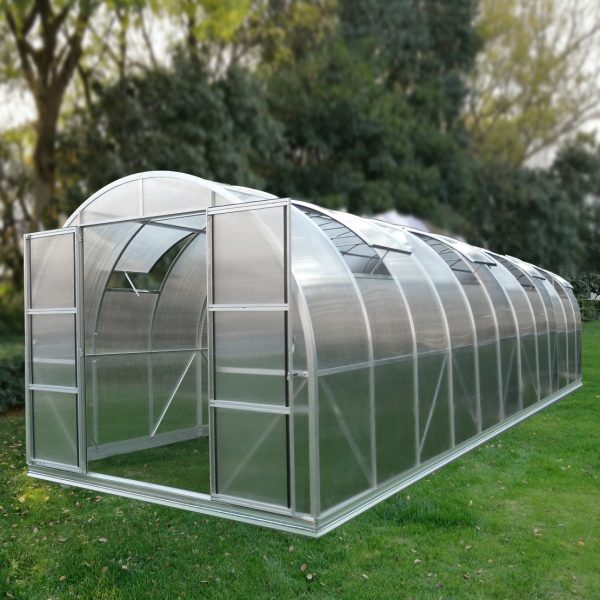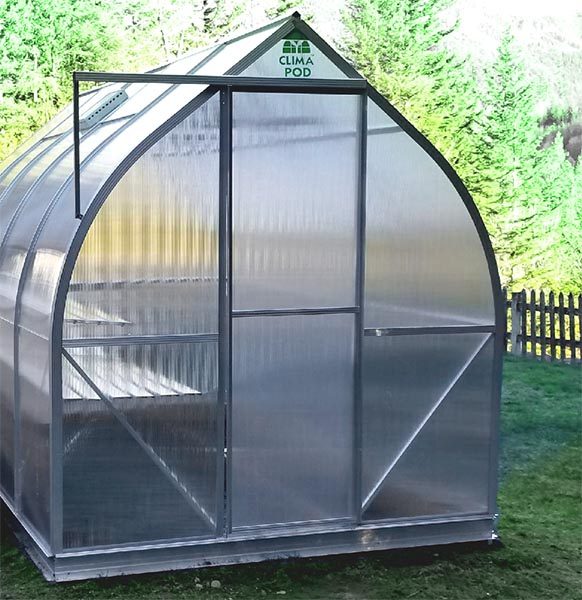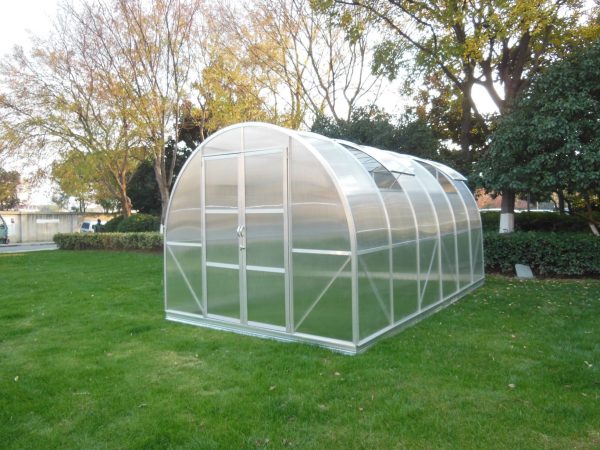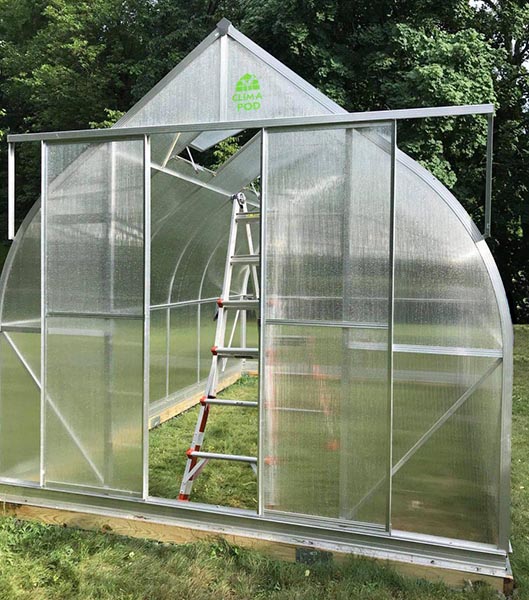Summer is the time when plants in the greenhouse are actively growing and bearing fruit. But in hot weather, it is important to water greenhouse plants properly so that they do not dry out and get sick.
How do you know if a greenhouse needs watering?
You should maintain air humidity in your greenhouse at 50% and soil humidity at 90%. It is these conditions that make it possible to obtain good growth and high yields, while avoiding fungal diseases.
To ensure the required humidity, plants are watered 1-2 times a week, taking into account the air temperature and dampness.
The frequency of watering depends on many factors:
- Type of plant: For example, cucumbers are moisture-loving plants and need frequent watering, but peppers and eggplants are more drought-tolerant.
- Age: Young plants newly planted in the greenhouse will need more frequent watering than mature plants.
- Weather: On hot days, plants evaporate more moisture, so they need more water.
- Soil type: Sandy soil dries out quickly, while clay soil retains moisture for a long time.
- Size of pots: Small pots dry out soil faster than larger pots.
Basic rules for water greenhouse plants
Do not over-water. Excess moisture harms roots and can lead to the development of fungal diseases.
Water in the morning or evening. During the hot part of the day, water quickly evaporates without having time to be absorbed into the soil. It is better to water in the early morning or evening when the sun is not so active.
Water at the root. Do not wet the leaves so as not to provoke disease.
Use warm water. Cold water can shock the roots and slow down plant growth. If you use a well or borehole for irrigation, the water may be too cold. In this case, it is better to collect water in a container and let it warm up a little by the sun.
If the air is very hot and the weather is dry, then watering is allowed at any time of the day. In addition, if you carefully pour water without getting it on the leaves, then there is no reason to worry about burns.
Regardless of the time, after watering the greenhouse should be ventilated. Otherwise, moisture will accumulate, which will lead to the development of fungal diseases.
How to understand that a plant in a greenhouse needs watering
Leaves wither is the first sign that the plant is not getting enough moisture. Run your finger through the soil at a depth of 2-3 in and check if the soil becomes dry. If it is so, you need to water.
Remember, that lack of water slows down the growth and development of the plant. Therefore, monitor the growth rate of your plantings.
Additional tips for water greenhouse plants
- Mulching. Covering the soil around plants with straw, grass clippings or other material helps retain moisture and reduce weeds.
- Drip Irrigation. This is an automatic watering system that delivers water directly to the roots, providing even moisture. Drip irrigation is especially convenient in a greenhouse, as it saves water and eliminates the need for manual watering.
Frequency of watering different plants in the greenhouse
Cucumbers are moisture-loving plants, so they need to be watered more often than others. Tomatoes and peppers typically need to be watered 1-2 times a week, but hot weather may require more frequent watering.
Watering cucumbers
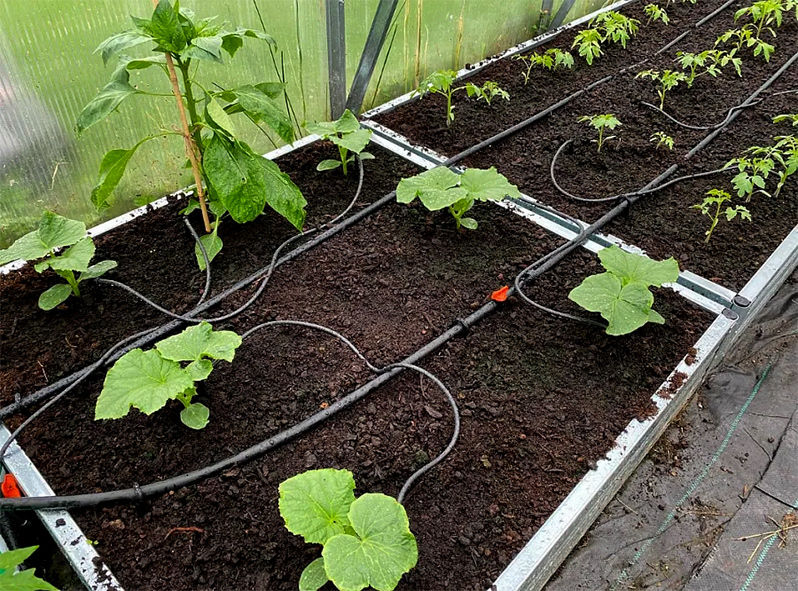
Cucumbers are fairly delicate plants that cannot tolerate either waterlogging or drought. Therefore, watering begins when the top layer of soil dries out or when the leaves lose turgor.
For irrigation, you need to use well-settled warm water (no colder than 77F). In very cold and dry weather, it is recommended to warm the water to 122F and pour it at a certain distance from the bush so that the drops do not fall on the leaves and root collar.
It should be taken into account that the roots of cucumbers are located below the surface of the soil. Therefore, drip irrigation would be the best option for them. Watering with a hose can damage the root system.
Watering tomato
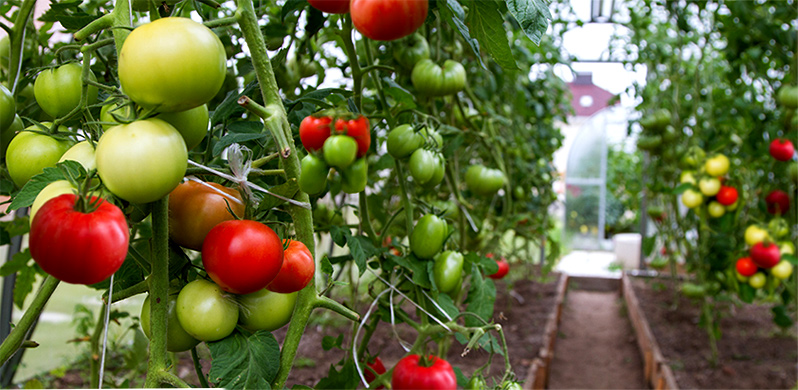
Tomatoes prefer moist soil, but can tolerate short periods of drought.
In young plants, the roots are located in the top layer of soil, which is why they need moderate (0.5 gallon per bush), but frequent (2-3 times a week) watering. Mature bushes develop a powerful root system, thanks to which watering can be done once a week, pouring 1.3 gallon of water under each bush. The soil should be wet to a depth of 6-8 inches. Water temperature is 73-75F.
During the ripening period of tomatoes, the amount of watering is increased. At the same time, you should not get too carried away, as excess moisture will cause cracking of the fruit. A lack of moisture will be indicated by curling and yellowing of the leaves.
Watering pepper
Peppers belong to the most moisture-loving crops. In addition, due to the limited root system, the flow of water into plants from the soil is difficult.
The frequency of watering depends on age. Young, actively growing plants are watered every other day, and adults – once every 5-7 days. 0.5 gallon of water are poured under each bush.
To get the maximum number of ovaries, it is recommended to arrange a slight drought during the period of mass flowering and fruiting. In this case, irrigating the paths will help maintain the required level of humidity.
Greenhouse watering methods
Several irrigation options are used in the greenhouse: manual, drip irrigation and automatic.
Manual watering
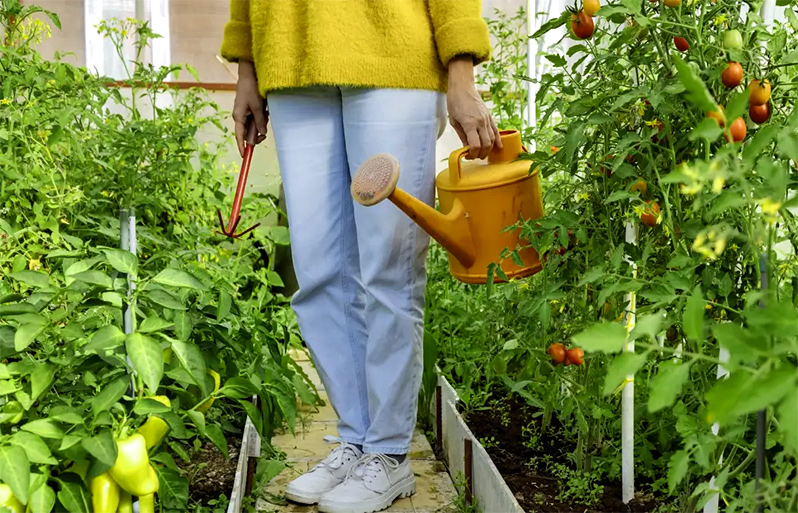
Plants are watered using a watering can or hose. When using a watering can, you will need to constantly run for a new portion of water, but you will be able to water each plant efficiently.
If a hose is used, it is recommended to connect it to a barrel (minimum volume – 200 liters), and not to a water supply. In this case, the water will be able to settle and heat up.
The manual method is only suitable for small greenhouses.
Drip irrigation
This method has many advantages:
- significant water savings – moisture is not wasted, but goes to the root zone;
- liquid flow directly to the roots without getting on the leaves;
- possibility of watering at any time of the day;
- avoiding leaching and salinization of the soil (due to the slow flow of water);
- lack of physical effort;
- exclusion of high humidity, which prevents the development of infections;
- low cost;
- possibility of self-production from scrap materials.
Automatic greenhouse plants watering
This is the best option for those who do not want to waste time on constant manual monitoring of the condition of the soil and plants in the greenhouse.
- full automation of the humidification process;
- adjustment depending on weather conditions, air humidity, plant needs;
- setting different modes in different parts of the greenhouse;
- the ability to set the necessary parameters (water flow, watering zone and time).
The main disadvantage is the high costs for small crops. Ideal for use when growing in large greenhouses.

Climapod Virtue XL 9×28, 9×35 & 9×42 Greenhouse Series With 6-mm Polycarbonate
Tip
If you are not sure how often to water the plants in your greenhouse, it is best to consult an experienced gardener or agronomist. They will tell you how to care for your plants so that they will delight you with a tasty harvest.
Greenhouse accessories for overheat protection
Shade Cloth 10×6 Black Knitted Net for Gardening and Greenhouse 50% Shading Rate


